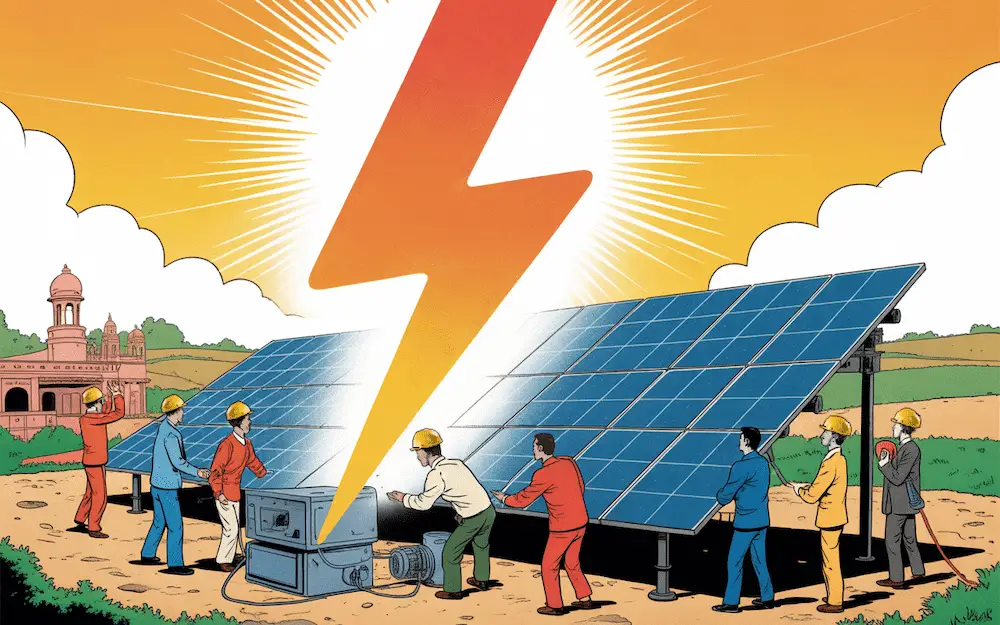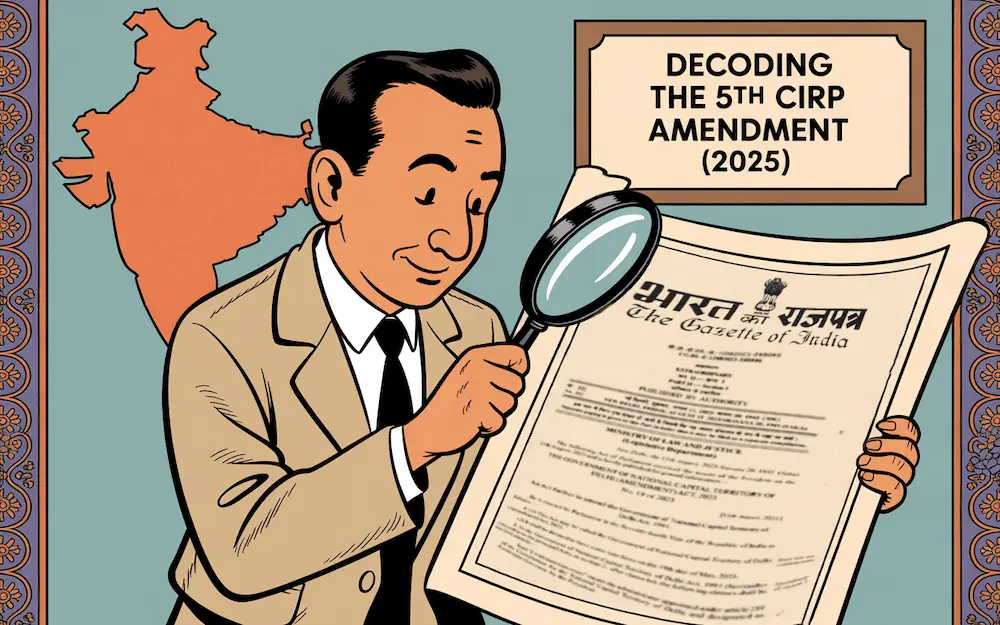
With its 300+ sunny days a year and proximity to high-consumption regions like Delhi-NCR, Haryana is positioning itself as a key solar power hub in North India. The state’s recently updated Haryana Solar Power Policy 2023, backed by active procurement by the Haryana Electricity Regulatory Commission (HERC), offers new incentives for developers, landowners, and even small-scale generators.
Haryana’s 2023 Solar Power Policy makes it one of India’s most attractive states for solar energy investments, utility-scale solar farms, and captive solar power plants. Whether you are a foreign investor, domestic developer, or industrial captive user, the regulatory ecosystem is now simplified, incentive-backed, and open-access friendly.
Key Highlights of the Haryana Solar Power Policy 2023
| Feature | Summary |
|---|---|
| Policy Duration | 5 years from October 2023 (benefits continue for project life) |
| Stamp Duty | 100% exemption for land used for solar plants |
| Electricity Duty | Waived for 10 years for captive/third-party solar projects |
| Open Access Benefits | Waiver of cross-subsidy surcharge until 2028 |
| Banking Facility | Permitted with year-end settlement |
| Land Use Approvals (CLU) | Fast-track process via single window |
| Transmission Access | Priority grid connectivity through HVPNL |
| Tariff Approval | Through HERC (benchmark tariff or competitive bidding) |
| Project Types | Utility-scale, captive (industrial), rooftop, group captive, solar parks |
Legal and Regulatory Framework for Solar Power Projects in Haryana
Setting up a solar power project in Haryana, whether utility-scale, group captive, or industrial; requires compliance with multiple legal and regulatory processes. Below is a simplified guide to the key aspects that developers, investors, and industrial consumers should be aware of:
1. Tariff Filings and Power Purchase Agreements (PPAs)
All solar power projects supplying electricity to DISCOMs or third parties must enter into legally compliant Power Purchase Agreements (PPAs). These PPAs may require:
- Adoption or approval by the Haryana Electricity Regulatory Commission (HERC), depending on whether the tariff is discovered through bidding or fixed as per HERC benchmarks.
- Adherence to Electricity Act, 2003 and applicable Renewable Energy policies.
- Additional considerations for group captive usage, especially in multi-party investment structures.
Understanding the timeline and filing procedure before HERC is critical to avoid delays in project commissioning. Under HERC Conduct of Business Regulations, 2004, and consistent with standard practice in HERC orders, the PPA approval application must be filed before the Commission by either the solar generator or the DISCOM, depending on who initiates the process. HERC typically takes 60–90 days to dispose of a PPA approval petition from the date of filing, subject to all documents being in order and no objections or disputes being raised by stakeholders or intervenors.
HERC’s review is conducted under Section 86(1)(b) of the Electricity Act, 2003, which empowers the Commission to approve PPAs entered into by distribution licensees. In the case of Section 63 bids, the Commission adopts the discovered tariff, but still approves the PPA. Where no competitive bidding is involved, and the tariff is determined by mutual agreement, HERC may call for detailed justification and public notice, further extending timelines.
2. Land Acquisition, Conversion & Licensing
Solar projects often require large tracts of land. Developers must:
- Conduct proper title due diligence to confirm ownership and land-use eligibility.
- Apply for Change of Land Use (CLU) permissions, often expedited under Haryana's single-window clearance system.
- Navigate local revenue laws, municipal permissions, and stamp duty exemptions available under the 2023 Policy.
Proper documentation and contract structuring are essential for long-term project viability and bankability. Before acquiring or leasing land, it’s essential to examine ownership records, encumbrances, revenue entries, and mutation history. This helps confirm that the land is free from disputes and is eligible for non-agricultural use. Projects must also ensure the land is not part of protected zones or notified forest areas. Solar power projects require conversion of agricultural land to industrial or infrastructure use.
Depending on the project location (rural, municipal, or industrial zones), developers may need to obtain No Objection Certificates (NOCs) from gram panchayats or municipal bodies, Land mutation entries in revenue records post-registration and stamp duty exemptions or reductions, especially where the project qualifies under the Haryana Enterprises & Employment Policy, 2020 or Solar Policy 2023. In certain zones or industrial estates, registration fee waivers and electricity duty exemptions may also apply.
3. Open Access and Energy Banking Arrangements
For projects supplying electricity across locations or states, open access permissions are vital. These include:
- Applications to State Load Dispatch Centre (SLDC) and Distribution Licensees.
- Strategy to avail banking facilities (permitted on an annual cycle under the policy).
- Understanding cross-subsidy surcharge (CSS) and additional surcharge exemptions valid till 2028.
Compliance with Electricity Rules, 2005 and local tariff orders is necessary while planning these transactions.
4. Project Structuring and Statutory Compliance
Most solar ventures are implemented through Special Purpose Vehicles (SPVs), joint ventures, or developer-investor models. These require:
- Clarity on captive user definitions, equity shareholding, and consumption norms as per Rule 3 of the Electricity Rules, 2005.
- Execution of MoUs, land aggregation contracts, and tripartite wheeling agreements.
- Understanding of REC (Renewable Energy Certificate) mechanisms and associated registration procedures.
Careful structuring ensures regulatory clarity and smooth interaction with DISCOMs and state agencies.
Do you require Power Purchase Agreement (PPA) Approval from the Haryana Electricity Regulatory Commission (HERC)?
HERC approval for PPA is required if:
1. You are selling power to a DISCOM (like UHBVN or DHBVN):
- The PPA needs to be approved by Haryana Electricity Regulatory Commission (HERC).
- Even if the tariff is discovered via competitive bidding, it must be adopted by HERC under Section 63 of the Electricity Act, 2003.
- Without such approval, the PPA is not enforceable.
2. You are availing policy benefits under the Haryana Solar Policy 2023, such as:
- Banking of power
- Open access waivers
- Deemed approvals
- Wheeling concessions
In such cases, you may be required to disclose or get approvals for your PPA as part of broader regulatory compliance with HERC or HAREDA.
HERC approval for PPA may not be required if:
1. You are selling power to a private party (third-party or captive use) via open access, and:
- The buyer is not a DISCOM;
- The tariff is mutually negotiated; and
- You are not availing state subsidies or concessions requiring HERC compliance.
2. However:
- The PPA may still need to be submitted to the State Load Dispatch Centre (SLDC) or DISCOMs as part of the open access process.
- In certain cases, you may be asked to declare or present it to HERC, even if not for approval.
More Articles
-

Government Dues vs. IBC Protection: Can Tax Authorities Pursue Pre-CIRP Dues?
01 Jul 2025
-

Online Betting in India: Skill vs. Chance and the current Legal Landscape (2025)
05 Jul 2025
-

Things No One Tells You About Trademarks: What You Need to Know Before Launching Your Brand
13 Jul 2025
-

Decoding the 5th CIRP Amendment (2025): Resolution Plans, Avoidance Claims, and Judicial Clarifications
06 Jul 2025
